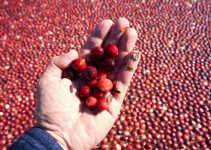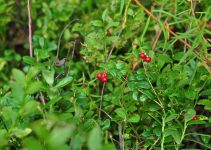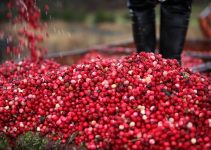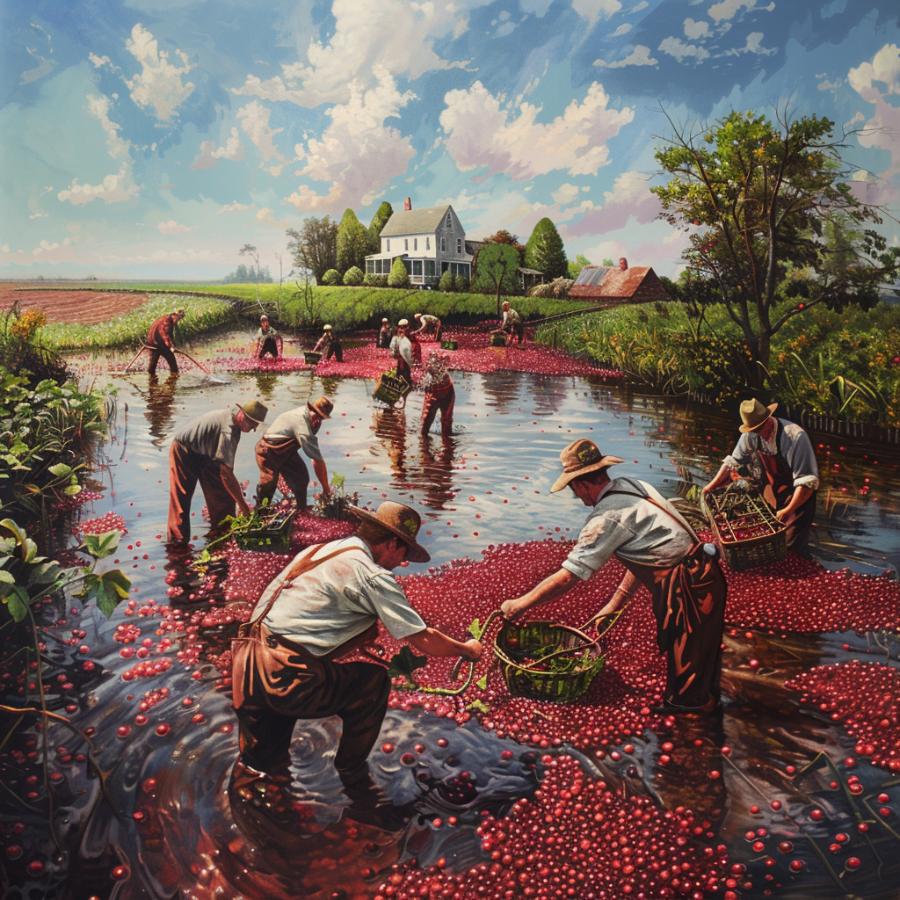
Working on the Bog
…
Some bogs have farm families who have been cultivating cranberries for generations. The annual harvest between September & October takes a lot of hard work, yet at the same time is deeply satisfying.
Up at 4:30am
The day begins before dawn. Most of the family know the routine by heart. They dress up in layers to ward off the cold, eat a hearty breakfast which is typically eggs, bacon, and toast (yes many still do eat that typical combination), have some coffee and get ready for the long day ahead.
They wear waterproof waders and boots so they can stay dry while wading in knee or hip deep water. Then gather their tools and head out to the bogs while it’s not quite light yet.
Flooding
The first task is to flood the bogs with water. Cranberries grow on low-lying vines in beds layered with sand, peat, gravel, and clay. A collection of these beds make up a bog, which is then flooded with water so that they can collect the berries easier. One of the head farmers flips a switch and water from nearby reservoirs flows into the bog until the vines are underwater.
As the water rises, the cranberries float to the surface, creating a visually striking sea of red that everyone is in awe of. The sight is one everyone knows from watching the Ocean Spray commercial. People who enjoy taking tours of bogs like to get a photo with the floating cranberries in the background.
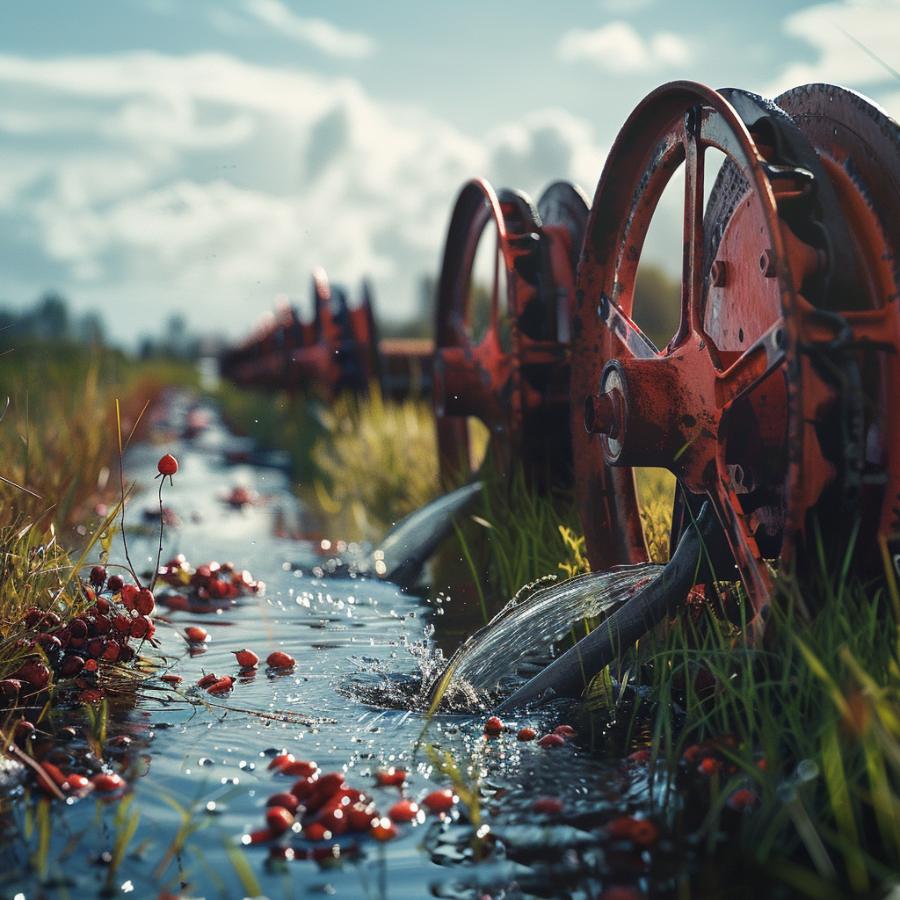
Water Reels on a Cranberry Bog
Water Reels
Once the bogs are flooded, the farmers then use the water reels, or “egg beaters,” as they are known. These machines are designed to gently remove the cranberries from their vines.
Once floating, the berries form a thick, red carpet on the water’s surface and they are ready to be corralled.
The farmers then have to work together to stretch a long, flexible barrier called a boom across the bog. It requires coordination and teamwork, as the boom is gradually drawn tighter to gather the floating cranberries into a concentrated mass.
It’s physically demanding work, and the cold water can be numbing, but most of them are used to it. They usually tell jokes and do anything they can to make the work more enjoyable. The camaraderie and shared experience are part of what makes this satisfying.
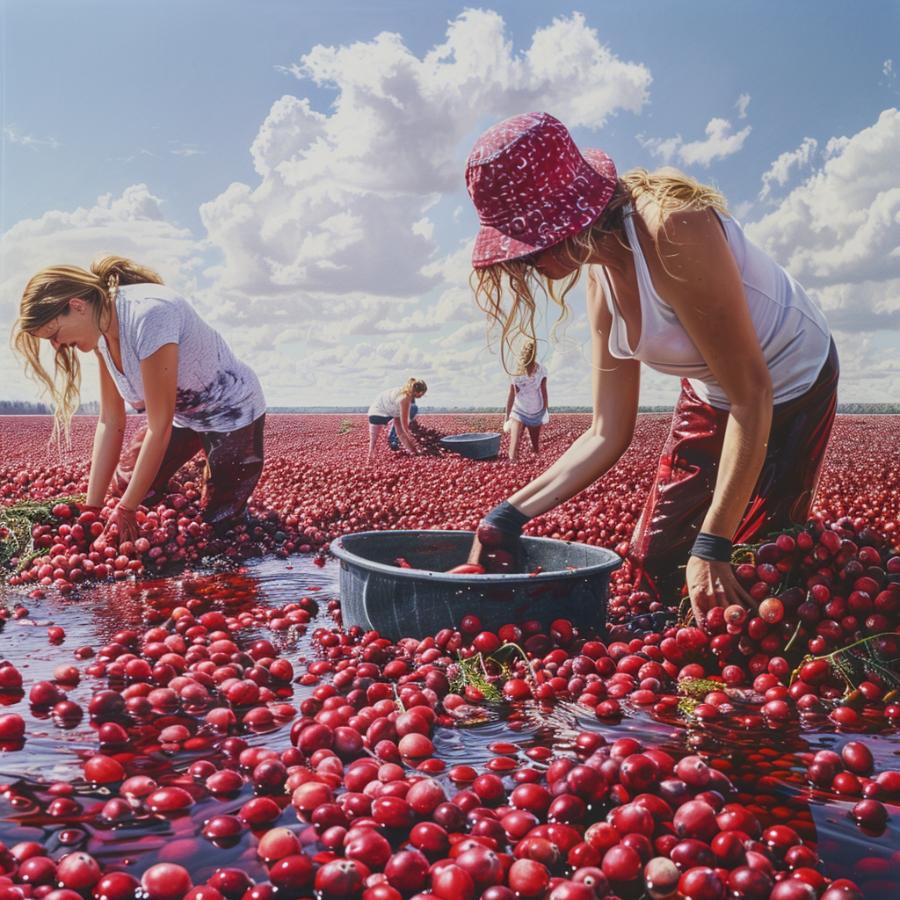
Collecting the Berries
In the past many farmers used to collect them by hand or with more primitive tools and methods. Today they use large pumps to vacuum the berries in from the water. These vacuums transfer the berries into trucks where they will be taken to the processing plant.
At this point in the day the workers break for lunch. In days past the wife or eldest daughter traditionally went inside abut an hour beforehand to prepare sandwiches and hot cider. They would all eat together, family and workers, sitting on the edge of the bog, enjoying the view.
Afternoon Shift
The afternoon is spent repeating the process in other sections of the bog. Each section is a little different than the one before, but the procedures are still the same: flood, reel, corral, and collect.
Toward the end of the day the trucks, filled with cranberries, head to the processing plant. Here, the berries are cleaned, sorted, and packaged. Quality control is important because any damaged or under-ripe berries are taken away to make sure only the good ones are used for market.
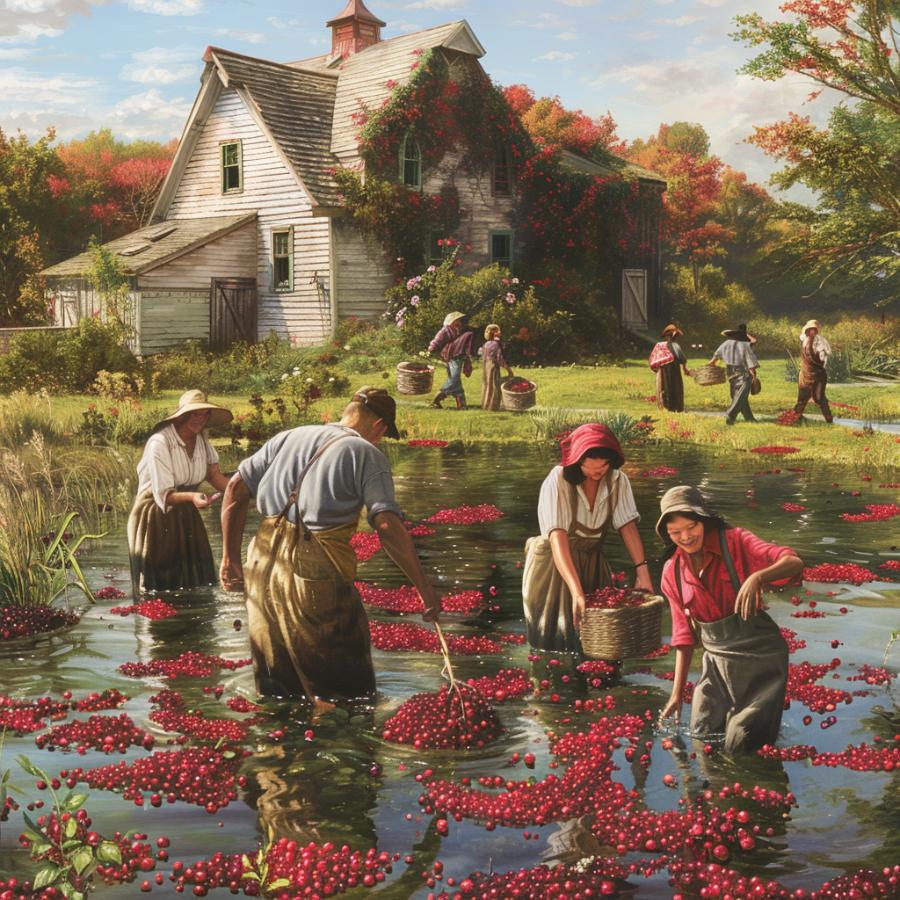
Working the Cranberry Bog
Early Evening
At this point the day’s work is done. Dinner is usually a big meal, and includes dishes that reflect their work: cranberry-stuffed chicken, fresh garden vegetables, and cranberry pie for dessert.
After dinner, they sit together and talk some more and then move onto their rooms to clean up, get some personal time and prepare for the next day’s work.
Harvest season is busy and there isn’t much time for things like hobbies, fun or even time with friends and extended family. The grind of the everyday work is definitely a sacrifice, but once again, a satisfying, unifying and bonding experience for the unit, whether they are a family, or a mix of family and hired hands.
Working a cranberry bog would make for an interesting summer job and an experience one won’t likely forget.
– Cranby


